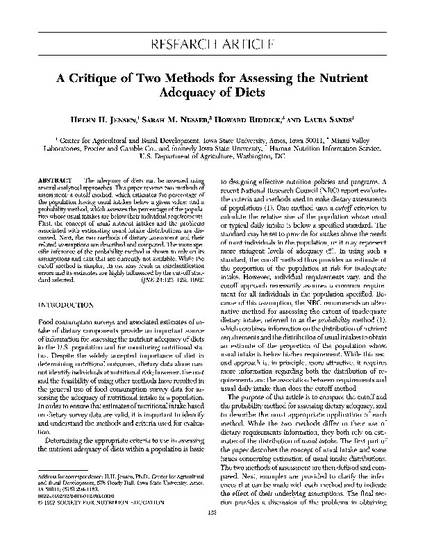
The adequacy of diets can be assessed using several analytical approaches. This paper reviews two methods of assessment: a cutoff method, which estimates the percentage of the population having usual intakes below a given value; and a probability method, which assesses the percentage of the population whose usual intakes are below their individual requirements. First, the concept of usual nutrient intakes and the problems associated with estimating usual intake distributions are discussed. Next, the two methods of dietary assessment and their related assumptions are described and compared. The more specific inference of the probability method is shown to rely on its assumptions and data that are currently not available. While the cutoff method is simpler, its use may result in misclassification errors and its estimates are highly influenced by the cut-off standard selected.
Available at: http://works.bepress.com/helen-jensen/8/

This article is from Journal of Nutrition Education 24 (1992): 123–129, doi:10.1016/S0022-3182(12)81038-7.